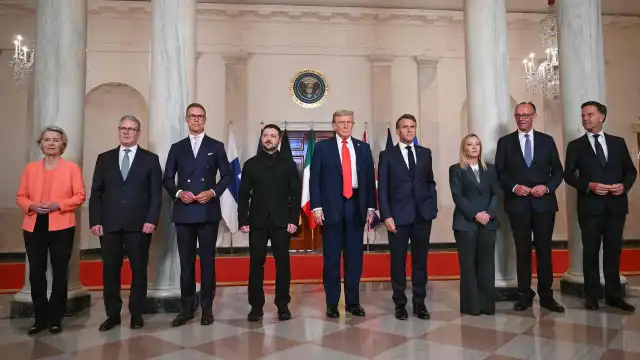Just six months ago, President Trump claimed the European Union was formed to “screw America.” Yet this week, he was lavishing praise on European leaders, complimenting their tans and calling them powerful. From my observation of international politics, this shift in tone isn’t accidental. It’s the result of European officials making a careful study of how to get the President’s attention and admiration.
Table of Contents
They’ve learned that the secret is to speak his language. By making concessions on trade and military spending and adopting a new communication style, they’ve begun to gain his ear and, crucially, retain his support for Ukraine. It’s a pragmatic approach to dealing with a president who operates very differently from his predecessors.
🗣️ The Playbook: Gratitude, Vocabulary, and Analogies
I’ve noticed several key strategies European leaders are now employing. First and foremost is saying ‘thank you.’ President Trump values being acknowledged for his contributions, and in a recent public meeting, European leaders thanked him around 30 times. They’ve also learned to adopt his vocabulary. For example, knowing his preference for tariffs over sanctions, they now talk more about using tariffs to punish Moscow.
Another effective technique is using real-estate terms, a world the President is intimately familiar with. During a meeting, Ukrainian President Volodymyr Zelensky used a map to explain the battlefield situation, while other leaders compared Russia’s territorial claims to the U.S. surrendering a state like Florida. This approach seems to resonate, with Trump later thanking Zelensky for the map.
🤝 Building Personal Rapport
Beyond language, building a personal connection is key. I’ve seen that leaders who enter Trump’s inner circle and develop a rapport with him have a much better chance of being heard. Finnish President Alexander Stubb has spent hours playing golf with Trump, while Italian Prime Minister Giorgia Meloni’s social conservatism has struck a chord with the U.S. leader and his aides.
This coordinated effort, where multiple leaders reinforce the same narrative, is designed to surround the President with their perspective, especially on the war in Ukraine. It’s a shift from what one former official called the European default of to “wait, worry and complain” to a more proactive and positive engagement strategy. This diplomatic effort is a fascinating case study in adapting to a new style of global leadership.
More Topics
- The Future of AI – Why the Brain is a Better Model Than Microchips
- A Guide to Trump’s ‘Everyone Inside’ Homelessness Strategy
- Ford’s Finances – Why Its High Dividend Payout Looks Hard to Maintain
- Robert Mulligan – A Look Back at Hollywood’s Last Poetic Filmmaker
- Fashion Trends – A Guide to the Return of the ’90s Bandanna
- A Guide to the Broken U.S. Child-Care System and How to Fix It
- Job Skills – A Guide to Certificates (and Why Many Don’t Pay Off)

